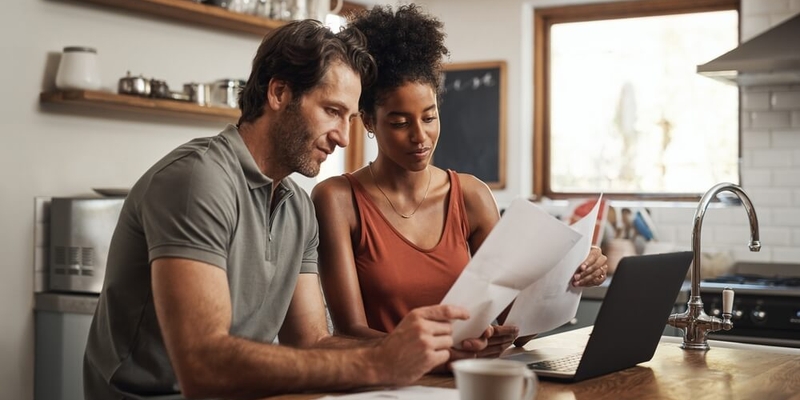
If you are not redirected within 30 seconds, please click here to continue.
Samedi: 10h – 16h HAE

If you are not redirected within 30 seconds, please click here to continue.
If you are not redirected within 30 seconds, please click here to continue.
This article has been updated from a previous version.
Down payment size is a constant question among homebuyers. Many assume, “bigger is better.”
But is it? If you have a wad of cash that you could put down on a house—perhaps from selling an existing home—should you?
Below we consider the options. We look at the pros and cons of common down payment sizes and weigh each's economic pros and cons.
Read more: Saving for a down payment
5% down
According to guidelines set by the Canadian Mortgage and Housing Corporation (CMHC), any homes with less than a 20% down payment requires mortgage loan insurance. Plus, you are only permitted to put a down payment of 5% on homes that cost under $500,000 – after that, you’ll have to put a down payment of 5% on the first $500,000 and 10% on the rest. Depending on where you live, you likely won’t have too many options if you only have a limited down payment saved.
That being said, there are still some benefits to putting down a 5% down payment.
Pros:
- Affordability: A 5% down payment is the least amount of capital required to become a homeowner in Canada.
- Faster savings: Compared to a 20% down payment, saving 5% can happen more quickly. This flexibility is important, especially when home prices are on the rise.
- Forced savings: It allows those with minimal assets to get themselves on a forced savings plan quicker, thus potentially building tax-free home equity faster (tax-free if you sell and claim the principal residence exemption).
- Better mortgage rates: High-ratio, insured mortgages (those with less than 20% down) often qualify for the best mortgage rates.
- Cash flexibility: Opting for a smaller down payment leaves more cash for other purposes—investing, education, home improvements, or emergency funds. Also, many don’t realize it, but you can borrow your 5% down payment (so long as that loan payment is included in your debt ratio calculations).
- Credit card option: Although strongly discouraged, some even put their down payment on their credit card.
Cons:
- Insurance premium: The minimum down payment requires a 4% default insurance premium, which can be rolled into the mortgage.
- Risk of negative equity and high financing: Starting with just 5% equity in your home raises the risk you end up with negative equity (i.e. your mortgage is worth more than your home) should prices fall.
- On day one of the mortgage, a buyer with 5% down is nearly 99% financed when all other costs, such as the above-noted insurance premium, are factored in.
- Interest expense: A larger mortgage size results in higher interest expenses.
- Maximum purchase price: keep in mind that the maximum purchase price with 5% is $500,000.
Use our Mortgage Payment Calculator to figure out your monthly payments
10% down
A 10% down payment allows you to consider more expensive homes. For example, even a 7.5% down payment could make a $999,999.99 purchase price possible.
Pros:
- Same as above, plus...
- Lower insurance premium: With a 10% down payment, you’ll pay a reduced default-insurance premium of 3.1% compared to the 4% for a 5% down payment.
- Refinancing potential: Having a higher down payment increases the likelihood of being able to refinance at the end of your 5-year fixed term (as refinances generally require an 80% loan-to-value ratio or less).
Cons:
- Costly insurance premium: Although lower than the 5% option, the 3.1% default-insurance premium is still a significant expense.
- Purchase price limit: Your maximum purchase price is capped at $1 million, your amortization period is limited to 25 years, and the property cannot be a non-owner-occupied rental property.
20% down
Homes over $1 million cannot be insured and require a down payment of at least 20%. But if you opt for a home below $1 million, you can still put 20% down and avoid having to purchase default insurance and reduce the amount of your mortgage balance. Here are more benefits and some drawbacks of putting down 20%.
Pros:
- Avoid default insurance premiums: You can avoid default insurance premiums, which can save you thousands of dollars.
- Higher purchase price: A larger down payment makes it possible to purchase a home over $1 million.
- Extended amortization: This option allows you amortizations over 25 years.
- Refinance eligibility: This option is also available for refinance mortgages.
- Diverse product choices: Having more capital opens up a world of product options, including re-advanceable mortgages, standalone Home Equity Lines of Credit (HELOCs), interest-only mortgages, and non-prime financing.
- Private financing opportunities: This downpayment option qualifies you for a wider array of private financing.
Cons:
- Capital tie-up: While advantageous, putting down more capital means you can’t invest that money elsewhere for potentially higher returns.
- Stricter uninsured stress test: Prepare for the stricter uninsured mortgage stress test:
- The stress test rate you must afford equals the greater of the benchmark rate or your contract rate + 200 basis points.
- In contrast, the insured stress test considers only the benchmark rate.
Learn more: How to buy an investment property as a first-time home buyer in Canada
35% down or more
Pros:
- Same as above, plus...
- Lowest low-ratio rates: With a 35% down or more, you qualify for the lowest low-ratio rates (insurable rates)—provided you meet the standard insurance criteria.
- Expanded product variety: It opens access to “non-conforming” product types, including higher-risk stated income mortgages, equity mortgages, and a broader array of non-resident mortgages.
- Peace of mind: Having plenty of equity provides more peace of mind for potential refinancing needs in the future.
Cons:
- The drawbacks are consistent with those mentioned for the 20%+ down payment.
- Putting down even more capital means you forego other investment opportunities.
When to put less down
You can often put capital to work more effectively than rushing to pay off your mortgage. It’s often preferable to diversify away from your mortgage and invest in an RRSP, TFSA, your own business or in paying down higher-cost debt, depending on your circumstances.
If you have a high annual salary and little money socked away, that may be especially true since you can more easily handle the higher monthly payments.
When to put more down
If your mortgage rate is 3% and your tax bracket is 40%, you need a 5% pre-tax return to compete with “investing” your free cash flow in a mortgage. A comfortable 5% return is not always easy to find, especially considering that mortgage payments are almost risk-free.
Putting more down may also be worthwhile for those with ample money saved up but a modest annual income. That way they end up with a smaller mortgage and more manageable monthly payments. This approach is safest when the borrower has cash reserves to fall back on or a re-advanceable mortgage that lets one re-borrow from a line of credit (without re-applying) in case of an emergency.
Other considerations
Whether you make the minimum down payment or much more, there are always positives and negatives.
Your five-year life goals, financial objectives, career prospects and countless other factors will dictate what makes the most sense to you.
One thing is certain, however. The size of your down payment should never be determined simply by the amount of free cash you have on hand. You could choose to invest it instead of shrinking your mortgage size, or to pay off your mortgage as fast as possible. The wisest strategy is always deploying your capital to its best use.
Read next: The hidden costs of buying a home
Compare Mortgage Rates
Engaging a mortgage broker before renewing can help you make a better decision. Mortgage brokers are an excellent source of information for deals specific to your area, contract terms, and their services require no out-of-pocket fees if you are well qualified.
Here at RATESDOTCA, we compare rates from the best Canadian mortgage brokers, major banks and dozens of smaller competitors.
Get money-saving tips in your inbox.
Stay on top of personal finance tips from our money experts!









